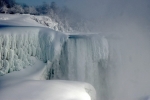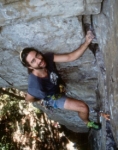robysue wrote:
"I stumbled on this article today and it has some relevance to this thread:
Length of Individual Apnea Events Is Increased by Supine Position and Modulated by Severity of Obstructive Sleep Apnea published in a peer reviewed journal. (I have access to the full article on line, and I don't think I have a subscription to the site. If the link doesn't work for you, and you are really interested in reading it, pm me.)
"Table 2 of the paper is kind of interesting for putting the OP's extreme (made up) example into perspective. The study involved over 500 patients and they gathered data on over 56,000 individual hypopnea events and over 36,000 individual obstructive apnea events. The longest hypopnea recorded in the study was 127.7 seconds, or a bit more than 2 minutes in length. The longest apnea was 92.5 seconds, or a bit more than 1.5 minutes in length. So the idea that someone could have a hypopnea (let alone an apnea) that lasted 35 minutes is preposterous.
"Nonetheless, the OP's idea that the significance of the length of events has not been looked at very much does seem to have some validity. The authors of the above article state in the abstract:
'In severe OSA, the obstruction events are longer in supine compared to nonsupine positions. Corresponding scientific information on mild and moderate OSA is lacking. We studied whether individual obstruction and desaturation event severity is increased in supine position in all OSA severity categories and whether the severity of individual events is linked to OSA severity categories.'
"The paper looks a a wide number of parameters, including the severity and duration of O2 desats associated with prolonged apnea events.
"The authors of the paper conclude that regardless of the severity of the apnea, events that occur when sleeping on the back tend to be longer and tend to be associated with more severe O2 desaturations. Hence, it could be that what the OP can proactively do to minimize "total time in apnea" is to minimize supine sleep along with minimizing his treated AHI."
robysue's comments above, his linked article, the OP and the commentary might be related to the joke about how (was it three?) three blind men were clinging to different parts of an elephant --the trunk, the tail and a leg and had variously come to conclusions that the object they held was a large hose, a rope or tree trunk. Some comments and, particularly, robysue's contribution show some posters, including the first, have walked around the elephant and touched all or at least two of its elongations. As for me, all the issues raised here have been factors in cutting my RDI, desats and unrestful sleep (as described below in a quote from my December 2018 post, which has the typo "255" for two minutes 35 seconds, 155 seconds, which I corrected in my next post).
Among the most important factors--including this forum and preventing mouth breathing to enable my long-time use of the P10--in the past 4 years of my treatment success has been eliminating supine sleep, my favorite sleeping position, and determining to side sleep: both of these only after finding the truths in that last paragraph of my quote of robysue, to which I added bolding of the font. Given my having sleep apnea, I consider myself fortunate to have almost only OSA, which, in my case anyway, was and is easy to treat after identifying/documenting the contributing factor in a way that could not be denied. The proof was in using an accelerometer to show sleep angles, movements, suddenness of movements and how all those related to synchronized SleepyHead and oximeter graphs.
Now I gotta be careful, as I hang onto that elephant's ear, not to be or to strike others as having a tarp made of soft leather to cover-over (cure/treat) all OSA sufferers' SA. But I do think there is little reason to be troubled by positional SA if one is not prevented from side sleep, by back pains and real limitations more serious than mere preferences or habits. For me it was a progression as I learned the factors troubling me that I could modify, even if I didn't want to.
My full face mask sealing problems waking me up? Too much contact perimeter to seal, gotta try that little-contact P10, but I'm a mouth breather and so, for a time it was "the P10 would not work for me". Not so. Solution, a chin strap and then the cervical collar and the Gel-E-Roll mouth sealing element. I must side sleep? OK. I thought I could train myself, but failed at it like I did with the tongue-high-and-forward attempts to control mouth breathing. Frequent OSA clusters weren't convincing enough, so I got an accelerometer and used Excel to produce and integrate motion and position graphs (along with SH and oximeter graphics). After all, I was only rolling onto my back just before waking up (wasn't I?) This despite seeing OSA clusters through the night--DENIAL that I was on my back a lot. Laugh, but I had to resort to and regularly use an old surveyors' light canvas vest that has a built in large knapsack for plans and such on the back. It's filled with two nested empty cardboard boxes about 5in X 10 in X 16 in and all that keeps me out of my red zone that is less than 30 degrees off supine.
Lastly, with the ResMed Autoset I saw lots of flow limits, of spikes in flow rate and of tidal volumes even though I had frequent 0.0 AHI's and 0-3 cm leaks. The Vauto has squelched much of but not all those disturbances. Through it all, sleep improved by fits and starts and became more and more restful as I did those things this and the other sleep forums offered as solutions to my and other problems.
My experience was good and bad with the medical and sleep medicine community: the Good, I was given the ResMed S10 Autoset as my starter (but a half year ago I bought a used Vauto out of pocket); the Bad, early on I floundered without help (without knowledge of the forums) for more than a month and then I was, we are, "treated" at AHI<=5. The Vauto results have been amazing, which I am guessing is due as much to different algorithms as anything; the FL graph flattened out greatly and snore vanished--both so immediately, the first night after bonjour or Sleeprider gave me Vauto settings, that it was astonishing.
What follows is more of my over-long success story which I hope is encouraging to others as it deals specifically with the OP's valid (IMO) post about high apneic density, not just high frequency--both serious matters. But the OP's use of a breathing stoppage of 5 or 6 minutes (at our usual atmospheric pressure and moderate temperatures ) instead of 35 minutes would have sufficed to be lethal (his intent I assume) or mind destroying and would not have been so distracting. I should add that I did not have an oximeter to reveal the deepest depths of desats during high densities of long events in my first 4 months of treatment. But a home sleep study showed periods down to 68% SpO2 (for supine sleep in a recliner 4+ years ago).
"My sleep is much improved from my start with CPAP. From 3 hours time-in-apnea out of 7.5 hours of "sleep" I'm down to even a week with 0.0 AHI, 90 days of 0.1. In my first month (9/2015) I frequently had about 1/3 of sleep time in OA with lots of 120 second apneas (and a record OA of 255 seconds). It has been continual work and applications of ideas from experts in these forums. Silipos Gel-E-Roll to seal the mouth and enable use of the P10, wearing the cervical collar, getting the lower APAP pressure up where its needed; those were all game changers. But I'd still have occasional nights with a burst of OA--positional apneas I realized thanks again to these forums. Posts on this forum clued me in about an accelerometer source after I had thought I'd need to learn how to assemble one myself. It has shown me that OAs start coming on when I sleep within about a 60 degree arc centered on the forbidden supine position. Voila! Many zeroes after measures--those light cardboard boxes filling a knapsack on the back of my sleep vest--that keep me turned about 90 degrees and out of my red zone.
"Time synchronized graphs of SpO2 data, graphs from Sleepyhead and those showing (my many) bodily accelerations and position shifts (mostly at snores) show unscored bodily movement that--graphically at least--sometimes shows greater disturbance/movement than apneas which are scored. Most of my position shifts accompany a snore or flow limitation and I think the snore triggers the moves. Of course some are some shifts for comfort, too. It begins to look like the sleep impairing culprit for me is mainly snores and the coincident-motion events that are accompanied by a significant increase in pulse rate along with sharp increase in Tidal volume."
ASB












